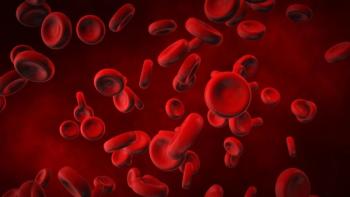
Oncology NEWS International
- Oncology NEWS International Vol 11 No 6
- Volume 11
- Issue 6
Low but Real Risk of Lymphedema Reported After Sentinel Lymph Node Biopsy
EVANSTON, Illinois-Although biopsy of sentinel lymph nodes is often considered an almost risk-free procedure in the staging of breast cancer, a retrospective chart review showed a surprising incidence of lymphedema associated with this procedure. Carole H. Martz, RN, MS, and colleagues at Evanston Northwestern Healthcare in Illinois reported a 3% risk of lymphedema after sentinel lymph node biopsy (SNLB, n = 303), compared to a 17% risk after axillary dissection (n = 117).
EVANSTON, IllinoisAlthough biopsy of sentinel lymph nodes is often considered an almost risk-free procedure in the staging of breast cancer, a retrospective chart review showed a surprising incidence of lymphedema associated with this procedure. Carole H. Martz, RN, MS, and colleagues at Evanston Northwestern Healthcare in Illinois reported a 3% risk of lymphedema after sentinel lymph node biopsy (SNLB, n = 303), compared to a 17% risk after axillary dissection (n = 117).
"The risk of lymphedema following sentinel node biopsy is low but real and should be treated as such. All patients need to have preoperative education in preventive measures as well as baseline pre-op and post-op arm measurements," Ms. Martz said.
Global recommendations for postoperative lymphedema prevention include weight control, prompt reporting of infection in the limb or breast on the operated side, avoidance of trauma to the arm (such as from blood pressure cuffs, intravenous needles, or vaccinations), and use of a compression garment for airline travel or vigorous exercise.
Retrospective Review
The retrospective chart review of SNLB patients in a clinical research project at Evanston Northwestern Healthcare was prompted by several patients who presented with lymphedema after having SNLB in conjunction with a lumpectomy or mastectomy. Patients’ subjective reports included arm heaviness, arm tightness, rings and clothing feeling tighter, or a change in arm skin and tissue texture or feel.
The investigators pulled all charts on patients who had SLNB either alone or followed by axillary lymph node dissection. "Our initial hypothesis was that there would be no increased risk of lymphedema in the SNLB patients," Ms. Martz said.
Lymphedema was defined as a 1-cm increase in arm circumference compared to preoperative measurements or a 50 mL or greater volumetric measurement difference between arms.
Risk Factors Identified
Chart review identified lymphedema in 9 of 303 SLNB patients (3%) vs 20 of 117 axillary dissection patients (17%). Further analysis uncovered a number of risk factors for lymphedema in SLNB patients. These included:
- breast tumor located in the upper outer quadrant;
- breast radiation therapy;
- axillary radiation;
- more than one breast operation;
- weight gain of 10 pounds or more;
- trauma such as wound infection.
In contrast, there was no association between lymphedema and tumor quadrant location in the axillary dissection patients.
"Our recommendations are that patients who have had either SLNB or axillary dissection should follow standard lymphedema precautions regardless of the number of lymph nodes removed and that clinicians should be aware of the increased risk of lymphedema in patients with upper outer quadrant breast tumors who have had SLNB alone procedures," Ms. Martz said.
Articles in this issue
over 23 years ago
Gleevec Effective as First-Line Therapy of CML: IRIS Trialover 23 years ago
Curcumin May Enhance TRAIL-Induced Cancer Cell Deathover 23 years ago
Symptom Clusters or Groupings Are Common in Cancer Outpatientsover 23 years ago
Allogeneic BMT Ups 5-Year EFS in Ph- ALLover 23 years ago
HIV-1 Vaccine Proving Safe, Immunogenic in Humansover 23 years ago
ACS to Fight Tobacco ‘Pandemic’ Worldwideover 23 years ago
Aspirin Helps Prevent Recurrent Large Bowel AdenomasNewsletter
Stay up to date on recent advances in the multidisciplinary approach to cancer.

















































































